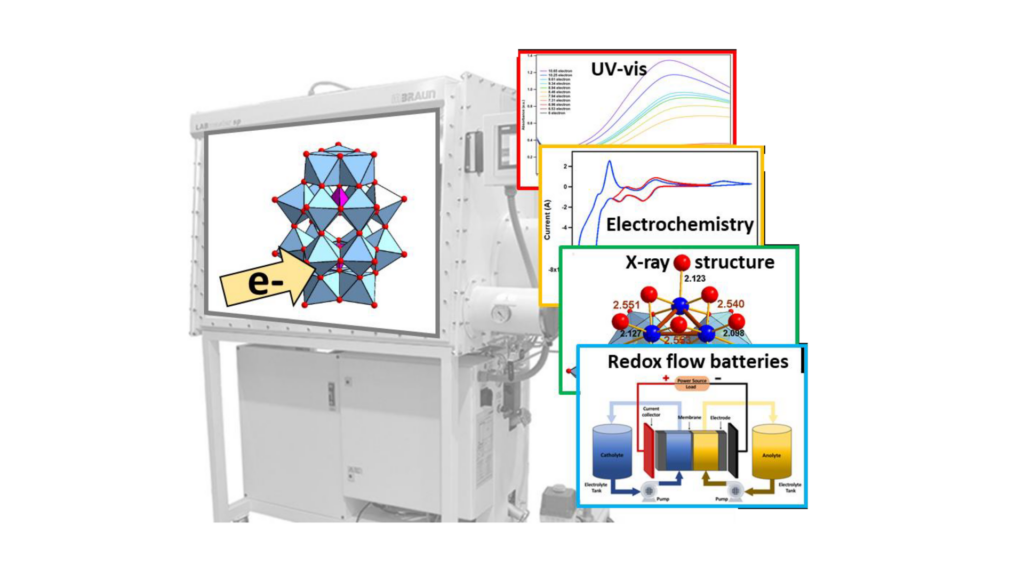GloBoPOM
A glovebox system to study the massive electron-storage in polyoxometalate-based anolytes and to designlo HER electrocatalysts (GloBoPOMs)
Aqueous redox-flow batteries represent stationary energy-storage technology that could integrate the electricity grid to regulate renewable energies. Recent discoveries demonstrated that electroactive polyoxometalates (POMs) can be used as “electron reservoirs” in anolytes, yielding to a dramatic improvement of the redox-flow batteries performances. Furthermore, recent reports evidence the electron-storage in POMs containing solution pave the way toward potential applications associated to on-demand hydrogen generation from water. To move away from the serendipitous design of such electrochemical-energy storage systems, our team is studying how POMs evolve during their charging/decharging processes in aqueous solution (ANR-JCJC POMEROL).
This “small equipment” proposal aims to integrate an anaerobic workstation for i) preparing, ii) crystallizing, and iii) handling super-reduced Versailles polyoxometalates, a class of air-sensitive compounds which can contain up to 24 electrons per POM unit. This glovebox will give us an efficient workplace to disentangle the unveiled mystery of the super-reducibility of POMs by elucidating both their structural and electronic features of super-reduced POMs and their solution behavior.


